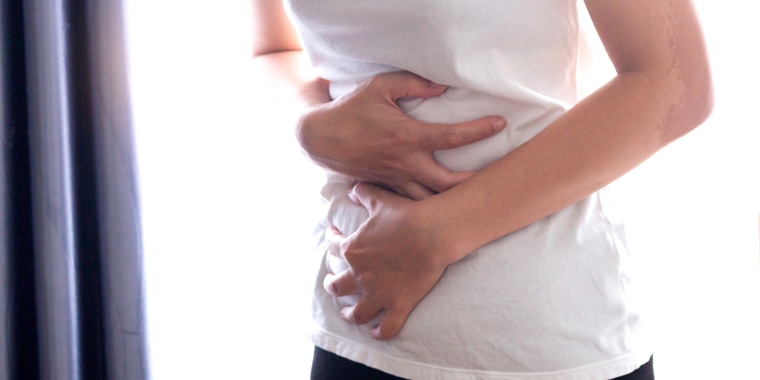As doctors learn more about COVID-19, more and more symptoms are being reported. Some people who are ill with the coronavirus may experience a "fizzing" sensation, others could be coughing up blood. Dermatologists have used the term "COVID toes" to describe a phenomenon among some coronavirus patients. The coronavirus symptoms kids are experiencing weeks after a possible infection are alarming.
There is also recent evidence an upset stomach can be a key symptom for people who have a mild form of the disease.
Digestive problems, particularly diarrhea, can be the first clue in a “unique sub-group” of patients who are infected with the new coronavirus, but don’t have the more well-known warning signs, according to a recent study made available before peer review by the American Journal of Gastroenterology.
These people may only later — or never — go on to develop respiratory issues and fever. They’re also diagnosed later than other patients, which means they may unknowingly spread the virus.
Download the TODAY app for the latest coverage on the coronavirus outbreak.
The findings come after previous research found up to half of COVID-19 patients in general may complain of digestive symptoms.
The authors of the new paper wanted to understand more about the 80% of people who have the mild form of the disease, said Dr. Brennan Spiegel, study co-author and director of health services research at the Cedars-Sinai Health System in Los Angeles.
“COVID-19 is not just a cough,” Spiegel told TODAY. “Of course, we’re very focused on the lungs because that’s what can cause people to die. But this virus, if it gets into your saliva and you swallow it, can then enter the intestinal system.”
The virus enters the human body through a particular receptor that’s found in very high levels in the gastrointestinal tract, he noted.
“If you unfurl your intestines, you have almost a tennis court worth of surface area. So you have this huge area where the virus can just start to replicate itself over and over again,” Spiegel said.
“It seems that’s happening in some patients who have the GI version of this disease.”
Is nausea a symptom of COVID-19 as well?
The findings mean that people who suddenly complain of diarrhea, nausea or vomiting after being around someone possibly infected with the new coronavirus should be suspected for the illness, even if they don’t have a cough, shortness of breath, sore throat or fever, the authors wrote.
The study involved 206 patients with mild cases of lab-confirmed COVID-19 in Wuhan, China, where the outbreak began.
They were divided into three groups: 48 patients who only experienced a digestive symptom; 69 who had both digestive and respiratory issues; and 89 who only experienced respiratory symptoms. The authors followed them until they tested negative for the disease.
Of those suffering stomach problems, 57% had diarrhea — with one-fifth of those patients experiencing it as their first COVID-19 symptom.
About 62% of patients with a digestive symptom had a fever at the same time, which left more than one-third of patients who continued to have a normal temperature.
What to know if you have digestive problems now:
Diarrhea is one of the most common symptoms people experience in everyday life. Moreover, stress and anxiety — both of which are at high levels during the coronavirus outbreak — can cause GI symptoms like abdominal pain, bloating, discomfort and diarrhea.
So Spiegel advised people to consider the whole picture.
“I don’t want people to panic and think, ‘Oh my god, I had some loose stools so I have COVID-19.’ Well, probably not,” he said.
“I would say this: If you have new onset diarrhea — you’ve not had it before, and now all of a sudden you have new diarrhea — and you have a fever, that should be something that causes you to contact your doctor anyway, whether we’re in a pandemic or not.”
Additional symptoms like nausea and vomiting, cough and shortness of breath should be concerning, too.
Can stool transmit the disease?
The study didn’t directly confirm that, but the virus is being found in the stool of patients.
“We don’t yet know 100% that those particles being shed are infectious, but we also don’t have reason to doubt it at this point,” Spiegel said.
That's more reason to regularly wipe down the toilet handle, seat and bowl, and wash your hands after using the bathroom.
In a concerning finding, some COVID-19 patients were considered recovered because the virus was no longer found in their sputum (mix of saliva and mucus), but still tested positive for the pathogen when their stool was checked, Spiegel noted. Right now, stool is not being routinely tested.
“The most rigorous definition (of viral clearance) would be: It’s not coming out of any of your body parts,” he said.



